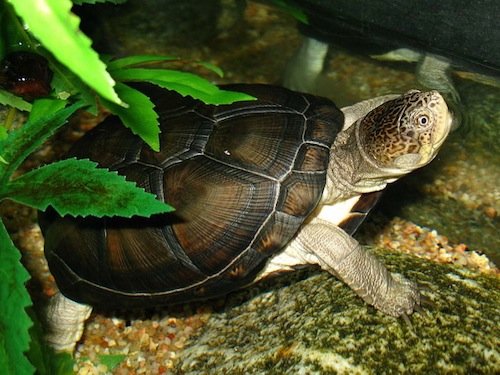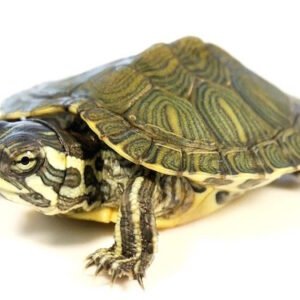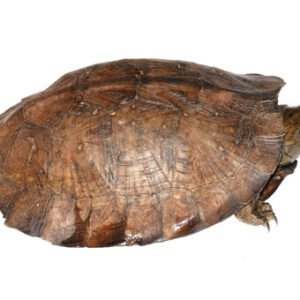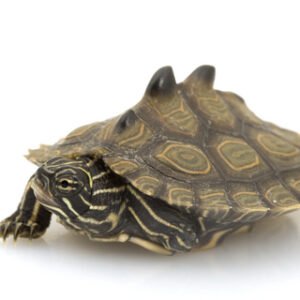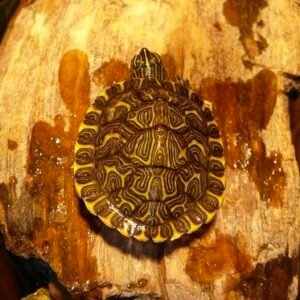Introduction to the African Sideneck Turtle
The African Sideneck Turtle, scientifically known as Pelomedusa subrufa, belongs to the family Pelomedusidae, which encompasses various species of side-necked turtles. This particular species is characterized by its unique trait of retracting its head sideways into its shell rather than pulling it straight back, a behavior that distinguishes it from many other turtle species. In terms of physical attributes, adults typically reach a shell length ranging from 25 to 35 centimeters, translating to about 10 to 14 inches. Their shells are often dark brown or olive-green, with varying patterns that provide camouflage within their natural habitat.
These turtles are predominantly found in freshwater environments, inhabiting rivers, lakes, and ponds across sub-Saharan Africa, including countries such as Nigeria, Angola, and Uganda. The African Sideneck Turtle demonstrates a remarkable adaptability, thriving in a variety of aquatic settings like swamps and marshlands. Such habitats provide the essential elements for their lifestyle, marked by a predominantly aquatic existence where they are excellent swimmers, using their webbed feet for efficient movement through water.
The diet of the African Sideneck Turtle is omnivorous, comprising a combination of aquatic vegetation, insects, and small fish. This dietary flexibility has allowed the species to thrive in diverse environments, as they can take advantage of available food sources in their surroundings. Furthermore, these turtles have a slow metabolism and often bask in the sun on riverbanks to regulate their body temperature. Overall, the African Sideneck Turtle stands out not only for its unique physical characteristics but also for its remarkable adaptation to its environment, contributing to its ongoing survival in the wild.
Caring for African Sideneck Turtles in Captivity
Keeping African Sideneck Turtles as pets requires a comprehensive understanding of their unique needs to thrive in captivity. The first consideration is the habitat. A spacious aquarium or outdoor pond that mimics their natural environment is essential. Ideally, the tank should provide a minimum of 75 gallons of water, with a depth of at least 12 inches, allowing them to swim freely. It is crucial to maintain water quality through regular filtration and partial water changes to ensure a healthy environment.
Access to basking areas is equally vital. Providing a basking platform should be incorporated into the setup, allowing the turtles to dry off and regulate their body temperature. Utilizing an appropriate UVB light source for around 12 hours a day will help in synthesizing Vitamin D3, which is essential for calcium absorption. The temperature gradient in the habitat should range between 75-80°F in the water and 90-95°F at the basking site.
The dietary needs of African Sideneck Turtles are omnivorous, comprising both plant and animal matter. A balanced diet can include commercially prepared turtle pellets, fresh leafy greens, and occasional protein sources like insects or shrimp. It is essential to ensure that the food is cut into manageable sizes and to offer a variety to prevent nutritional deficiencies.
Health maintenance is crucial in fostering the well-being of African Sideneck Turtles. Regular check-ups with a veterinarian experienced in reptile care can help identify common issues such as respiratory infections or shell problems early. Additionally, preventive care strategies such as monitoring water quality and maintaining proper temperature can aid in averting health problems. When handling these turtles, gentle and infrequent interactions can promote trust and a healthy pet-owner relationship, enhancing their overall care experience in captivity.

